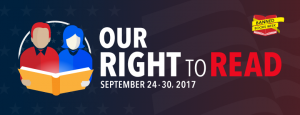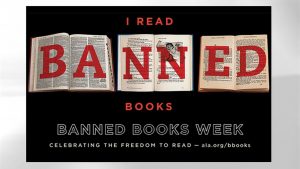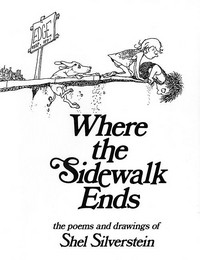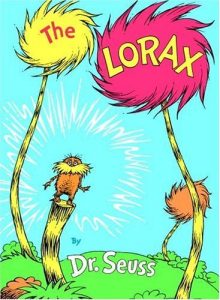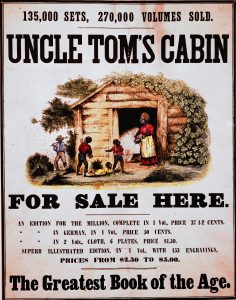Every year during Banned Books Week, we try to feature a letter from an author responding to the challenge to, or attempt to ban their books. This year’s letter come from American novelist, memoirist, and lover of words and letter, Pat Conroy.

Conroy was born in Atlanta, Georgia, in 1945, the eldest of 7 children. His father was a Marine Corp fighter pilot who suffered from alcoholism, and was both physically and emotionally abusive to Conroy, his siblings, and his mother. The family moved a great deal as a result of the armed forced, and thus, Conroy had few outlets or friends until college. Basketball was a saving grace, allowing him an outlet for the emotions and stress of his home life. So was English, as you’ll soon see.
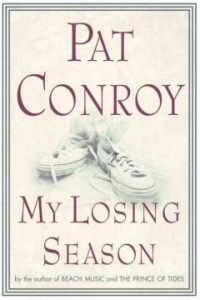 Conroy was a graduate of The Citadel, The Military College of South Carolina and his experiences there provided the basis for two of his best-known works, the novel The Lords of Discipline and the memoir My Losing Season. Though he taught in South Carolina after his graduation, he was fired after his first year for his unconventional teaching practices, including his refusal to use corporal punishment on students, and for his alleged lack of respect for the school’s administration. He later wrote The Water Is Wide based on his experiences as a teacher, and the book was awarded a humanitarian award from the National Education Association.
Conroy was a graduate of The Citadel, The Military College of South Carolina and his experiences there provided the basis for two of his best-known works, the novel The Lords of Discipline and the memoir My Losing Season. Though he taught in South Carolina after his graduation, he was fired after his first year for his unconventional teaching practices, including his refusal to use corporal punishment on students, and for his alleged lack of respect for the school’s administration. He later wrote The Water Is Wide based on his experiences as a teacher, and the book was awarded a humanitarian award from the National Education Association.
Conroy wasn’t afraid to shy away from tough discussions and conversation. His novel The Great Santini dealt with a marine fighter pilot who was physically, emotionally, and psychologically abusive to his family. The book caused a good deal of estrangement between Conroy and his family, with his mother’s family picketing outside his book signings and attempting to prevent people from attending. His father would also, apparently, sign copies of the book with the inscription “I hope you enjoy my son’s latest work of fiction”, with ‘fiction’ underlined multiple times. Conroy also supported bringing awareness to the hidden life of ‘military brats’, from their secrets strengths, to the enormous difficulties of displacement, isolation, and trauma.
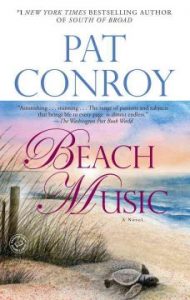 His two most well-known works, arguably, are Prince of Tides, about Tom Wingo, an unemployed South Carolina teacher who goes to New York City to help his sister, Savannah, a poet who has attempted suicide, to come to terms with their past, and Beach Music, a novel about an American ex-patriate living in Rome who returns to South Carolina upon news of his mother’s terminal illness, and attempts to face his own darkness, including the loss of his wife to suicide, and the friendships that were torn apart by the Vietnam War. Both novels–and many of Conroy’s other works–were made into successful and memorable films. But their content also made some people uncomfortable.
His two most well-known works, arguably, are Prince of Tides, about Tom Wingo, an unemployed South Carolina teacher who goes to New York City to help his sister, Savannah, a poet who has attempted suicide, to come to terms with their past, and Beach Music, a novel about an American ex-patriate living in Rome who returns to South Carolina upon news of his mother’s terminal illness, and attempts to face his own darkness, including the loss of his wife to suicide, and the friendships that were torn apart by the Vietnam War. Both novels–and many of Conroy’s other works–were made into successful and memorable films. But their content also made some people uncomfortable.
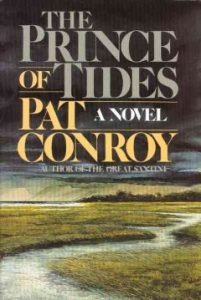 Some of those people worked for the Kanawha County school board in West Virginia. When parents complained about their children reading the books for their high school Honors English class, taught by Steve Shamblin (who had taught the books several years in a row) due to the depiction of suicide, violence, and sex, the Kanawha County school board banned The Prince of Tides and Beach Music in 2007. Students in the school banned together, led by a young woman named Makenzie Hatfield, and vowed to take the school board to court to prevent the ban from being implemented, or spreading. As Hatfield noted to the press, “This is a college class… We chose to take this class. The school didn’t tell us to. We chose.” During Banned Books Week in October of 2007, students from Nitro High School teamed up with students from George Washington High School, both schools in the Kanawha County School District, to form a student coalition against censorship, and approximately 50-60 students wore T-shirts with their own protest slogans, and held their books at a board meeting, while demonstrating a silent protest. Some 20 students also signed up to speak about their First Amendment rights, and rights as readers.
Some of those people worked for the Kanawha County school board in West Virginia. When parents complained about their children reading the books for their high school Honors English class, taught by Steve Shamblin (who had taught the books several years in a row) due to the depiction of suicide, violence, and sex, the Kanawha County school board banned The Prince of Tides and Beach Music in 2007. Students in the school banned together, led by a young woman named Makenzie Hatfield, and vowed to take the school board to court to prevent the ban from being implemented, or spreading. As Hatfield noted to the press, “This is a college class… We chose to take this class. The school didn’t tell us to. We chose.” During Banned Books Week in October of 2007, students from Nitro High School teamed up with students from George Washington High School, both schools in the Kanawha County School District, to form a student coalition against censorship, and approximately 50-60 students wore T-shirts with their own protest slogans, and held their books at a board meeting, while demonstrating a silent protest. Some 20 students also signed up to speak about their First Amendment rights, and rights as readers.
Hatfield also sent an email to Conroy, who responded with the letter below, which we quote in part:
October 24, 2007
To the Editor of the Charleston Gazette:
I received an urgent e-mail from a high school student named Makenzie Hatfield of Charleston, West Virginia. She informed me of a group of parents who were attempting to suppress the teaching of two of my novels, The Prince of Tides and Beach Music. I heard rumors of this controversy as I was completing my latest filthy, vomit-inducing work. These controversies are so commonplace in my life that I no longer get involved. But my knowledge of mountain lore is strong enough to know the dangers of refusing to help a Hatfield of West Virginia. I also do not mess with McCoys. […]
In 1961, I entered the classroom of the great Eugene Norris, who set about in a thousand ways to change my life. It was the year I read The Catcher in the Rye, under Gene’s careful tutelage, and I adore that book to this very day. Later, a parent complained to the school board, and Gene Norris was called before the board to defend his teaching of this book. He asked me to write an essay describing the book’s galvanic effect on me, which I did. But Gene’s defense of The Catcher in the Rye was so brilliant and convincing in its sheer power that it carried the day. I stayed close to Gene Norris till the day he died. I delivered a eulogy at his memorial service and was one of the executors of his will. Few in the world have ever loved English teachers as I have, and I loathe it when they are bullied by know-nothing parents or cowardly school boards.
About the novels your county just censored: The Prince of Tides and Beach Music are two of my darlings which I would place before the altar of God and say, “Lord, this is how I found the world you made.” They contain scenes of violence, but I was the son of a Marine Corps fighter pilot who killed hundreds of men in Korea, beat my mother and his seven kids whenever he felt like it, and fought in three wars. My youngest brother, Tom, committed suicide by jumping off a fourteen-story building; my French teacher ended her life with a pistol; my aunt was brutally raped in Atlanta; eight of my classmates at The Citadel were killed in Vietnam; and my best friend was killed in a car wreck in Mississippi last summer. Violence has always been a part of my world. I write about it in my books and make no apology to anyone. In Beach Music, I wrote about the Holocaust and lack the literary powers to make that historical event anything other than grotesque.
People cuss in my books. People cuss in my real life. I cuss, especially at Citadel basketball games. I’m perfectly sure that Steve Shamblin and other teachers prepared their students well for any encounters with violence or profanity in my books just as Gene Norris prepared me for the profane language in The Catcher in the Rye forty-eight years ago.
The world of literature has everything in it, and it refuses to leave anything out. I have read like a man on fire my whole life because the genius of English teachers touched me with the dazzling beauty of language. Because of them I rode with Don Quixote and danced with Anna Karenina at a ball in St. Petersburg and lassoed a steer in Lonesome Dove and had nightmares about slavery in Beloved and walked the streets of Dublin in Ulysses and made up a hundred stories in The Arabian Nights and saw my mother killed by a baseball in A Prayer for Owen Meany. I’ve been in ten thousand cities and have introduced myself to a hundred thousand strangers in my exuberant reading career, all because I listened to my fabulous English teachers and soaked up every single thing those magnificent men and women had to give. I cherish and praise them and thank them for finding me when I was a boy and presenting me with the precious gift of the English language.
The school board of Charleston, West Virginia, has sullied that gift and shamed themselves and their community. You’ve now entered the ranks of censors, book-banners, and teacher-haters, and the word will spread. Good teachers will avoid you as though you had cholera. But here is my favorite thing: Because you banned my books, every kid in that county will read them, every single one of them. Because book-banners are invariably idiots, they don’t know how the world works—but writers and English teachers do.
I salute the English teachers of Charleston, West Virginia, and send my affection to their students. West Virginians, you’ve just done what history warned you against—you’ve riled a Hatfield.
Sincerely,
Pat Conroy
You can read the full letter over at Letters of Note.
As Conroy notes, life is hard. People do terrible, seemingly unspeakable things to each other, and to themselves. But books give us the power to speak of these things in a way that builds empathy, provides invaluable insight, and helps many of us feel that we are not alone in coping with such issues. They may spark uncomfortable discussions or thoughts, they may lead us to feel negative emotions–but all of those feelings are part of growing, of having our worldview expanded, and widening our ability to connect with other human beings whose live is unlike our own. That is an incredible power for such a small object as a book. And Banned Books Week calls on us to celebrate that power, not to hide it.
Pat Conroy died in March 2016…but we still send along our thanks to him for his courage, for his words, and for his defense of everyone’s right to read.
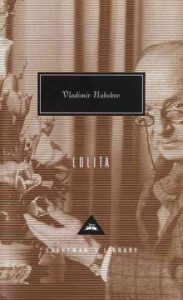
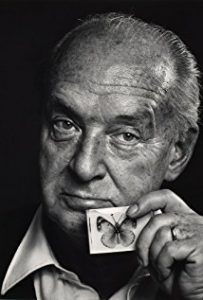 Nabokov’s 1956 letter is to his friend and fellow scholar Morris Bishop, and notes the growing furor over Lolita. It also makes note of Nabokov’s view of the books difficult subject matter. As he notes, the novel is about exploitation and manipulation, about power and corruption and pain. Although it features descriptions of sexual acts (without actually referring to ‘sex’, or the use of any language that might in any way be construed as lewd), it is not a ‘racy’ book. It is a tragedy, in the most profound sense of the word.
Nabokov’s 1956 letter is to his friend and fellow scholar Morris Bishop, and notes the growing furor over Lolita. It also makes note of Nabokov’s view of the books difficult subject matter. As he notes, the novel is about exploitation and manipulation, about power and corruption and pain. Although it features descriptions of sexual acts (without actually referring to ‘sex’, or the use of any language that might in any way be construed as lewd), it is not a ‘racy’ book. It is a tragedy, in the most profound sense of the word.
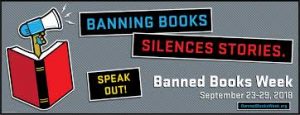
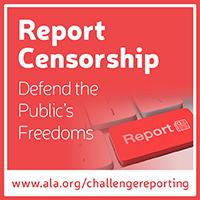 We here at the Library are big fans of Banned Books Week, and constant supporters of your right to read whatever you so desire. As such, you can look forward to enjoying some themed blog posts this week, starting with the ALA’s list of most challenged books of 2017, and the reasons for these challenges. The ALA Office for Intellectual Freedom tracked 354 challenges to library, school and university materials in 2017. Of the 416 books challenged or banned in 2017, these titles were the most challenged:
We here at the Library are big fans of Banned Books Week, and constant supporters of your right to read whatever you so desire. As such, you can look forward to enjoying some themed blog posts this week, starting with the ALA’s list of most challenged books of 2017, and the reasons for these challenges. The ALA Office for Intellectual Freedom tracked 354 challenges to library, school and university materials in 2017. Of the 416 books challenged or banned in 2017, these titles were the most challenged:

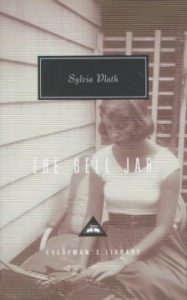
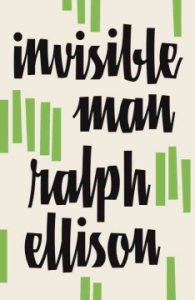
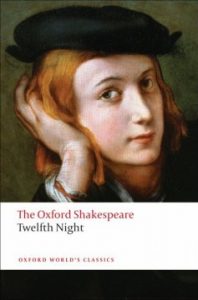
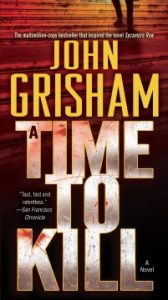
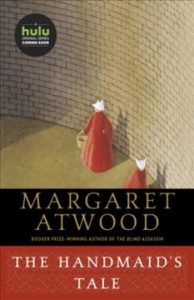
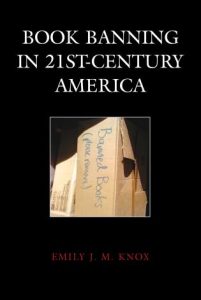
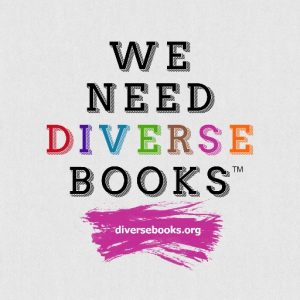

 Conroy was a graduate of The Citadel, The Military College of South Carolina and his experiences there provided the basis for two of his best-known works, the novel
Conroy was a graduate of The Citadel, The Military College of South Carolina and his experiences there provided the basis for two of his best-known works, the novel  His two most well-known works, arguably, are
His two most well-known works, arguably, are  Some of those people worked for the
Some of those people worked for the 